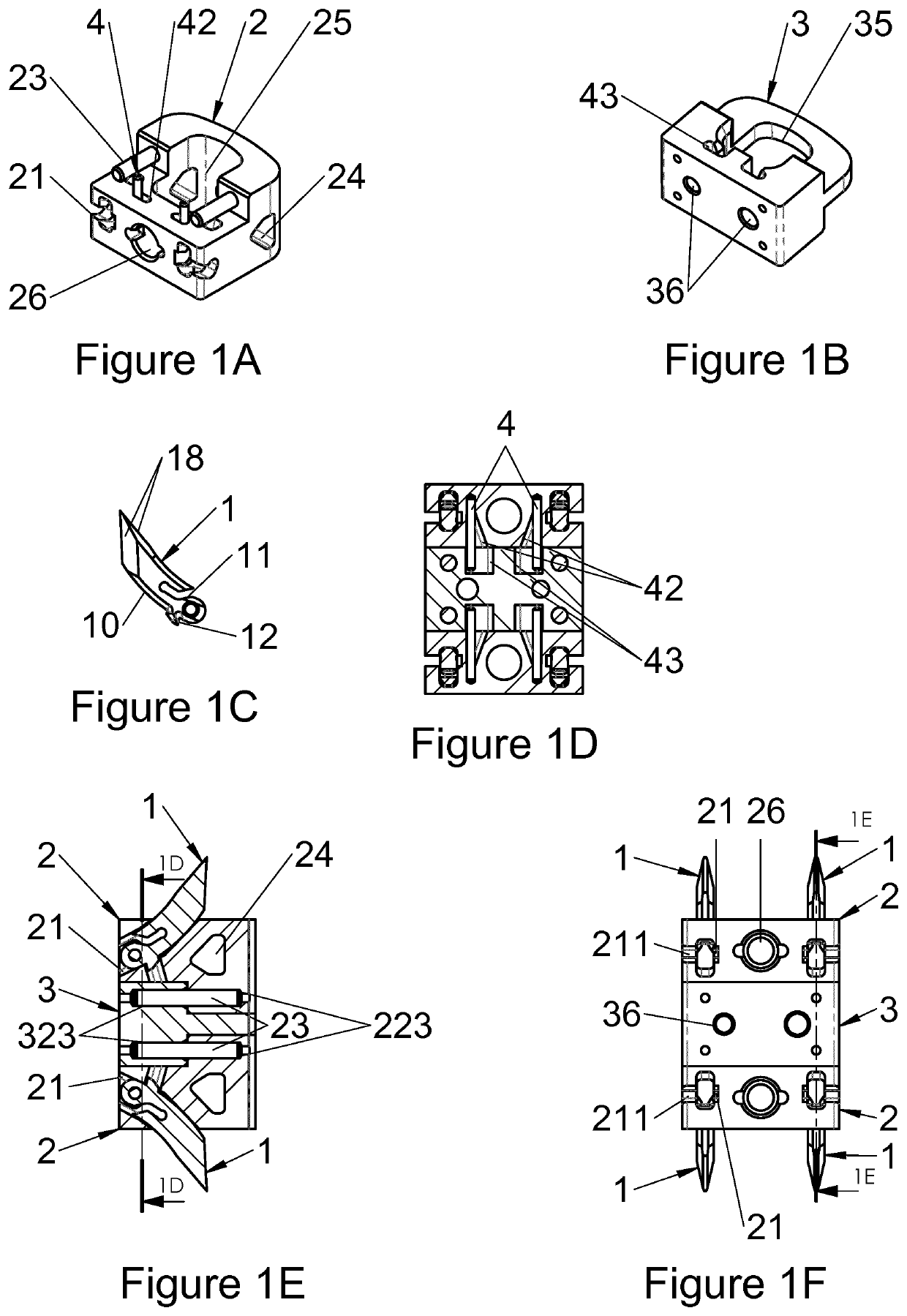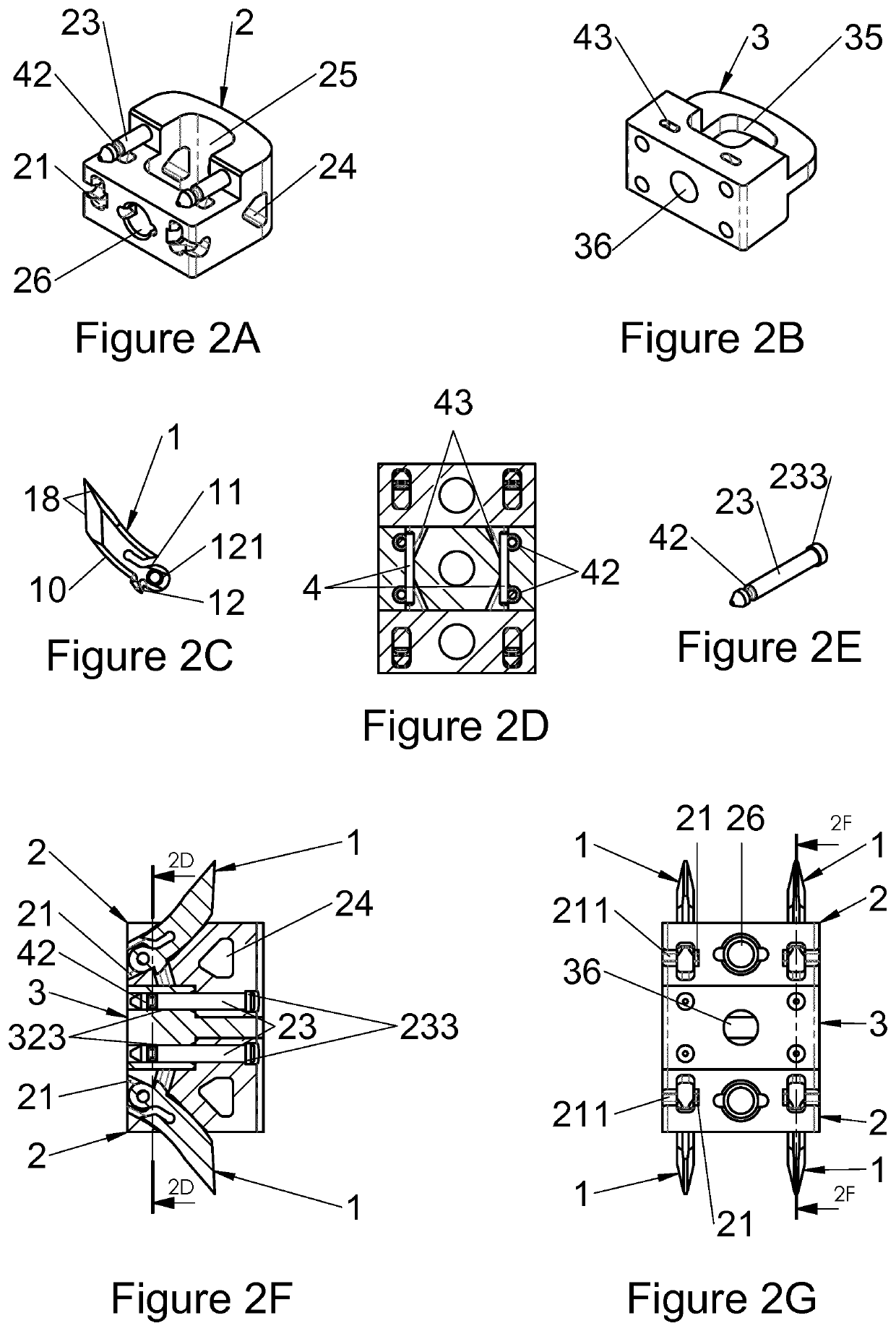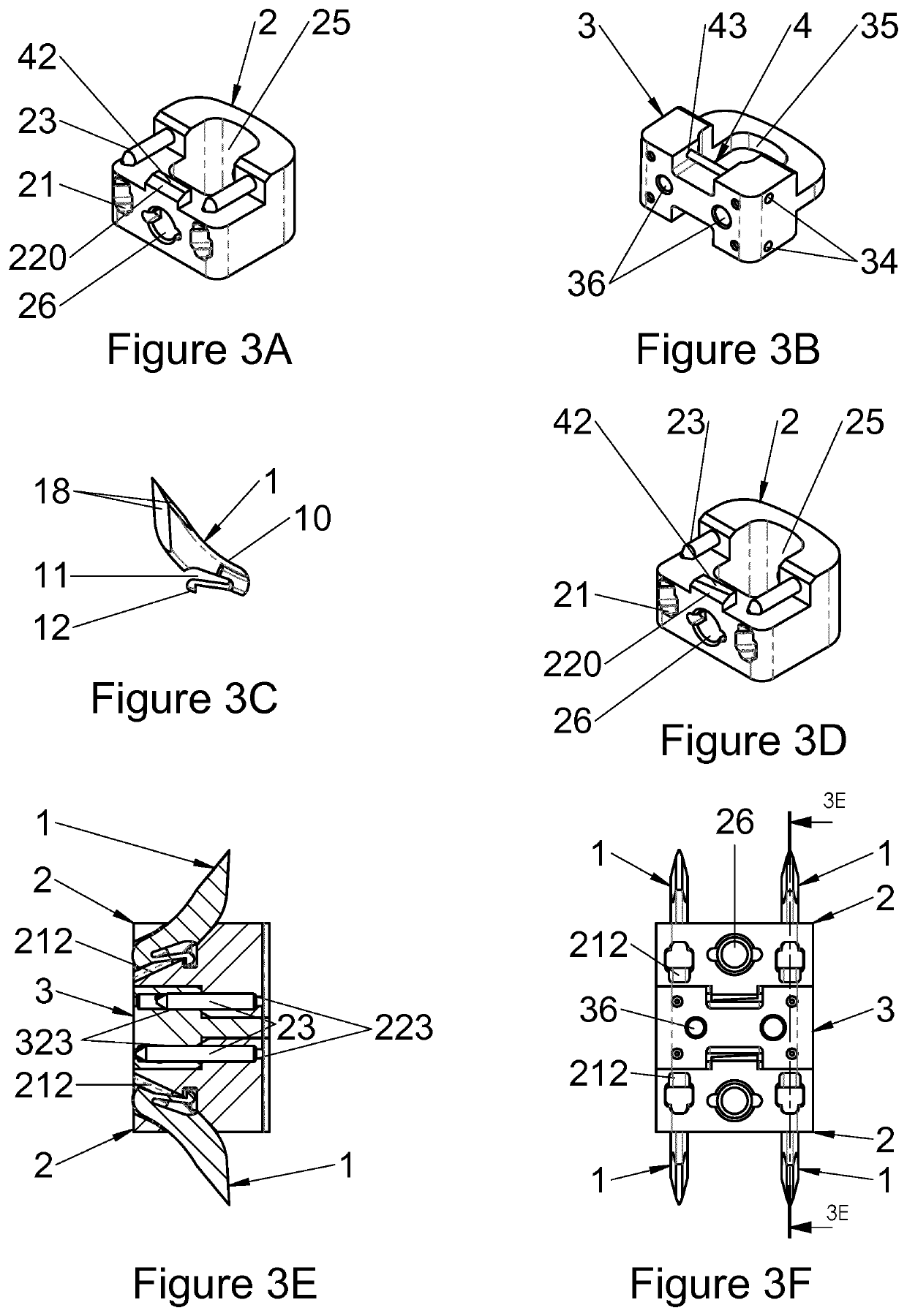Vertebral implant, device for vertebral attachment of the implant and instrumentation for implantation thereof
a technology for vertebrae and implants, applied in the field of vertebral implants, can solve the problems of degradation of vertebrae, intervertebral discs, vertebrae (either partially or completely), and/or deformation of vertebrae, and achieve the effect of convenient implanting
- Summary
- Abstract
- Description
- Claims
- Application Information
AI Technical Summary
Benefits of technology
Problems solved by technology
Method used
Image
Examples
Embodiment Construction
[0079]The present application relates to vertebral implants, for example for corpectomy involving ablation of a vertebral segment and insertion of an implant replacing the removed tissues. The present application also describes various bone anchoring means (or attachment devices) for implants in general, for example of the type of those of the present application. These attachment devices are also designated in the present disclosure with the terms of “anchor” or “anchoring” or further “attachment means”. The present disclosure also relates to implantation instrumentation for inserting an implant and to instrumentation for attaching implants. The term of “vertebral segment” is used in the present description in its generally accepted meaning of “a portion of the rachis” since it may correspond to all or part of at least one vertebral body and / or at least one intervertebral disc. Indeed, corpectomy may concern at least one entire vertebral body, or even an entire vertebra and its adj...
PUM
 Login to View More
Login to View More Abstract
Description
Claims
Application Information
 Login to View More
Login to View More - R&D
- Intellectual Property
- Life Sciences
- Materials
- Tech Scout
- Unparalleled Data Quality
- Higher Quality Content
- 60% Fewer Hallucinations
Browse by: Latest US Patents, China's latest patents, Technical Efficacy Thesaurus, Application Domain, Technology Topic, Popular Technical Reports.
© 2025 PatSnap. All rights reserved.Legal|Privacy policy|Modern Slavery Act Transparency Statement|Sitemap|About US| Contact US: help@patsnap.com



